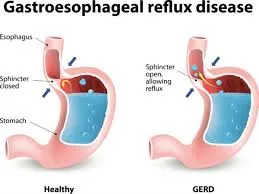Pain in the right forearm can significantly impact daily life, affecting everything from simple tasks to professional activities. Understanding the causes, symptoms, and treatment options is crucial for effective management and recovery. This comprehensive guide explores the anatomy of the forearm, common causes of pain, diagnostic approaches, and a range of treatment modalities from conservative therapies to surgical interventions. It also addresses preventive measures, recovery expectations, and the potential complications of untreated forearm pain. By empowering individuals with knowledge and resources, this guide aims to enhance understanding and promote proactive management of forearm pain for improved quality of life.
Anatomy of the Forearm
The forearm is the region of the upper limb between the elbow and the wrist. It consists of two parallel bones, numerous muscles, tendons, and nerves that work together to facilitate movement and functionality of the hand and wrist.
- Bones:
- Radius: Located on the lateral (thumb) side of the forearm, the radius is the shorter of the two forearm bones. It plays a crucial role in forearm rotation and stability.
- Ulna: Positioned on the medial (pinky finger) side of the forearm, the ulna is slightly longer than the radius and provides stability to the forearm and elbow joint.
- Muscles:
- Flexor Muscles: These muscles are located on the palm side (anterior compartment) of the forearm and are responsible for flexing the wrist and fingers.
- Examples include the flexor digitorum superficialis, flexor digitorum profundus, and flexor carpi ulnaris.
- Extensor Muscles: Situated on the back side (posterior compartment) of the forearm, these muscles extend the wrist and fingers.
- Examples include the extensor digitorum, extensor carpi radialis longus, and extensor carpi ulnaris.
- Flexor Muscles: These muscles are located on the palm side (anterior compartment) of the forearm and are responsible for flexing the wrist and fingers.
- Tendons:
- Tendons are tough connective tissues that connect muscles to bones and allow for the transmission of muscle forces to produce movement.
- In the forearm, tendons run along the length of the muscles and attach to the bones of the hand and fingers, facilitating fine motor movements.
- Nerves:
- Median Nerve: Runs along the center of the forearm and supplies sensation to the palm, thumb, index finger, middle finger, and half of the ring finger.
- Ulnar Nerve: Passes through the ulnar tunnel in the elbow and provides sensation to the pinky finger and half of the ring finger.
- Radial Nerve: Travels along the radial (thumb) side of the forearm and controls movement and sensation in the back of the hand, thumb, and index finger.
Common Causes of Forearm Pain
- Muscular Causes:
- Tennis Elbow (Lateral Epicondylitis): A repetitive strain injury affecting the tendons on the outer side of the elbow, often caused by overuse of the forearm muscles.
- Golfer’s Elbow (Medial Epicondylitis): Similar to tennis elbow but affecting the tendons on the inner side of the elbow, caused by repetitive flexion and gripping motions.
- Muscle Strains: Overstretching or tearing of forearm muscles due to sudden or excessive force, common in sports or activities involving repetitive motions.
- Joint and Bone Causes:
- Fractures: Breaks in the radius or ulna bones due to trauma or impact.
- Arthritis: Inflammation of the joints in the forearm, such as osteoarthritis or rheumatoid arthritis, leading to pain and stiffness.
- Osteochondritis Dissecans: A condition where a piece of bone or cartilage within a joint loses blood supply and may cause pain and limited movement.
- Nerve-related Causes:
- Carpal Tunnel Syndrome: Compression of the median nerve as it passes through the carpal tunnel in the wrist, leading to pain, numbness, and tingling in the forearm and hand.
- Radial Nerve Entrapment: Compression or entrapment of the radial nerve as it travels through the forearm, causing pain, weakness, or numbness on the thumb side of the forearm.
- Cubital Tunnel Syndrome: Compression of the ulnar nerve at the elbow, resulting in pain, tingling, and weakness in the forearm and hand.
Symptoms of Forearm Pain
- General Pain Characteristics:
- Dull ache, sharp pain, or throbbing sensation in the forearm.
- Pain may be constant or intermittent, depending on the cause.
- Muscular Causes:
- Tennis Elbow (Lateral Epicondylitis):
- Pain and tenderness on the outer side of the elbow, radiating down the forearm.
- Pain worsens with gripping or lifting objects.
- Golfer’s Elbow (Medial Epicondylitis):
- Pain and tenderness on the inner side of the elbow, extending into the forearm.
- Pain aggravated by flexing the wrist or fingers.
- Muscle Strains:
- Sudden onset of pain, often with a history of overuse or trauma.
- Swelling, bruising, and limited range of motion in the affected area.
- Tennis Elbow (Lateral Epicondylitis):
- Joint and Bone Causes:
- Fractures:
- Sharp, intense pain at the site of the fracture, worsened by movement.
- Swelling, bruising, and deformity of the forearm.
- Arthritis:
- Gradual onset of pain, stiffness, and swelling in the forearm joints.
- Pain worsens with movement and improves with rest.
- Osteochondritis Dissecans:
- Pain deep within the joint, exacerbated by weight-bearing or specific movements.
- Locking or catching sensation in the forearm joint.
- Fractures:
- Nerve-related Causes:
- Carpal Tunnel Syndrome:
- Tingling, numbness, or burning sensation in the palm, thumb, index, and middle fingers.
- Pain and discomfort that may radiate up the forearm.
- Radial Nerve Entrapment:
- Pain, weakness, or numbness on the thumb side of the forearm and hand.
- Difficulty extending the wrist or fingers fully.
- Cubital Tunnel Syndrome:
- Tingling, numbness, or pain in the pinky finger and half of the ring finger.
- Weakness in gripping or holding objects.
- Carpal Tunnel Syndrome:
- Other Symptoms:
- Swelling: Visible swelling or inflammation in the forearm area.
- Limited Range of Motion: Difficulty moving the forearm or hand fully.
- Warmth or Redness: Signs of inflammation or infection in the affected area.
Diagnosis of Forearm Pain
- Medical History:
- Detailed discussion to understand the onset, duration, and characteristics of the pain.
- Exploration of any history of trauma, overuse, or repetitive activities.
- Physical Examination:
- Palpation: Gentle pressure applied to assess tenderness, swelling, or abnormalities in the forearm.
- Range of Motion: Evaluation of the ability to move the forearm and wrist in various directions.
- Strength Testing: Assessment of muscle strength and grip strength.
- Neurological Examination: Testing sensation, reflexes, and nerve function in the forearm and hand.
- Imaging Studies:
- X-rays: To visualize fractures, bone abnormalities, or degenerative changes in the forearm bones.
- MRI (Magnetic Resonance Imaging): Provides detailed images of soft tissues like muscles, tendons, and nerves to detect injuries or structural abnormalities.
- CT Scan (Computed Tomography): Offers detailed cross-sectional images that can reveal fractures, joint abnormalities, or conditions affecting bone structure.
- Electrodiagnostic Tests:
- EMG (Electromyography): Measures electrical activity in muscles to assess nerve function and detect conditions like carpal tunnel syndrome or nerve entrapment.
- Nerve Conduction Studies: Measures how quickly electrical impulses travel through nerves to evaluate nerve damage or compression.
- Laboratory Tests:
- Blood Tests: Occasionally used to rule out systemic conditions like arthritis or infections that may contribute to forearm pain.
- Specialized Assessments:
- Ultrasound: Can be used to assess soft tissue injuries, inflammation, or abnormalities in real-time.
- Arthroscopy: Invasive procedure using a tiny camera to directly visualize and diagnose joint conditions if other tests are inconclusive.
- Diagnostic Injections:
- Diagnostic Lidocaine Injection: Used to temporarily numb specific nerves or joints to confirm their role in causing pain.
- Consultation: Referral to specialists such as orthopedists, rheumatologists, or neurologists for further evaluation and management based on specific findings.
Treatment Options for Forearm Pain
- Conservative Management:
- Rest and Activity Modification:
- Avoiding activities that exacerbate pain or strain the forearm muscles or joints.
- Resting the affected forearm to allow for healing.
- Ice and Heat Therapy:
- Applying ice packs to reduce inflammation and numb pain.
- Using heat therapy (warm compress or heating pad) to relax muscles and increase blood flow.
- Medications:
- Nonsteroidal Anti-inflammatory Drugs (NSAIDs):
- Ibuprofen, naproxen, or aspirin to reduce pain and inflammation.
- Pain Relievers:
- Acetaminophen for pain relief, particularly when inflammation is not a major factor.
- Nonsteroidal Anti-inflammatory Drugs (NSAIDs):
- Rest and Activity Modification:
- Physical Therapy:
- Stretching and Strengthening Exercises:
- Specific exercises to improve flexibility and strengthen forearm muscles.
- Gradual progression to restore range of motion and function.
- Manual Therapy:
- Techniques such as massage, myofascial release, or joint mobilization to reduce muscle tension and improve mobility.
- Stretching and Strengthening Exercises:
- Bracing or Splinting:
- Wrist Splints or Braces:
- Immobilization of the wrist or forearm to relieve strain and promote healing, particularly in conditions like carpal tunnel syndrome.
- Wrist Splints or Braces:
- Corticosteroid Injections:
- Local Injections:
- Direct administration of corticosteroids into the affected area to reduce inflammation and alleviate pain, often used for conditions like tendonitis or arthritis.
- Local Injections:
- Surgical Options:
- Fracture Repair:
- Surgical realignment or fixation of fractured bones in cases where conservative measures are insufficient.
- Tendon Repair:
- Surgical repair of torn or damaged tendons to restore function and alleviate pain, especially in severe cases of tendonitis or tears.
- Fracture Repair:
- Electrotherapy:
- Electrical Stimulation:
- Techniques like transcutaneous electrical nerve stimulation (TENS) to alleviate pain and promote healing.
- Electrical Stimulation:
- Alternative Therapies:
- Acupuncture:
- Insertion of thin needles into specific points to alleviate pain and improve energy flow.
- Chiropractic Care:
- Manipulative techniques to realign joints and relieve pressure on nerves contributing to forearm pain.
- Acupuncture:
- Lifestyle Modifications:
- Ergonomic Adjustments:
- Improving workstation setup and posture to reduce strain on the forearm during daily activities.
- Activity Modification:
- Avoiding repetitive motions or activities that aggravate forearm pain.
- Ergonomic Adjustments:
- Education and Self-care:
- Patient Education:
- Understanding the condition and following prescribed treatment plans.
- Self-care Strategies:
- Incorporating proper warm-up and stretching routines before physical activities.
- Practicing good body mechanics and using ergonomic tools to prevent recurrence.
- Patient Education:
- Follow-up and Monitoring:
- Regular follow-up appointments to assess progress and adjust treatment as needed.
- Monitoring for any signs of complications or recurrence.
Interventional Treatments for Forearm Pain
- Corticosteroid Injections:
- Purpose: To reduce inflammation and alleviate pain in conditions such as tendonitis (e.g., tennis elbow), arthritis, or bursitis.
- Procedure: A corticosteroid medication is injected directly into the affected area under ultrasound or fluoroscopic guidance for precise targeting.
- Platelet-Rich Plasma (PRP) Therapy:
- Purpose: To promote healing of injured tendons, ligaments, muscles, and joints by using the patient’s own concentrated platelets.
- Procedure: Blood is drawn from the patient, processed to concentrate platelets, and then injected into the affected area to stimulate tissue repair and reduce inflammation.
- Prolotherapy:
- Purpose: To stimulate healing and strengthen injured or weakened ligaments and tendons.
- Procedure: A solution (often containing dextrose or other irritants) is injected into the damaged tissue or around joints to provoke a mild inflammatory response, triggering the body’s natural healing process.
- Trigger Point Injections:
- Purpose: To relieve pain and muscle spasms associated with trigger points (localized areas of muscle tightness and tenderness).
- Procedure: A local anesthetic or saline solution is injected directly into the trigger point to deactivate it and alleviate associated pain and discomfort.
- Nerve Blocks:
- Purpose: To temporarily block pain signals from specific nerves responsible for forearm pain.
- Procedure: An anesthetic or steroid medication is injected near the nerve or nerve bundle, providing temporary pain relief and diagnostic information about the source of pain.
- Radiofrequency Ablation (RFA):
- Purpose: To disrupt nerve conduction and reduce pain signals from specific nerves causing chronic pain.
- Procedure: A specialized needle delivers radiofrequency energy to heat and disrupt nerve function, providing longer-lasting pain relief compared to nerve blocks.
- Joint Injections:
- Purpose: To reduce pain and inflammation in joints affected by arthritis or other inflammatory conditions.
- Procedure: Medications such as corticosteroids or hyaluronic acid are injected directly into the joint space to alleviate pain and improve joint function.
- Viscosupplementation:
- Purpose: To lubricate and cushion joints affected by osteoarthritis, reducing pain and improving mobility.
- Procedure: Hyaluronic acid, a substance naturally present in joint fluid, is injected into the joint to enhance lubrication and reduce friction.
- Ultrasound-Guided Procedures:
- Purpose: To enhance the precision and accuracy of injections by visualizing internal structures in real-time using ultrasound technology.
- Procedure: Ultrasound imaging helps guide the needle placement for injections into specific muscles, tendons, or joints, improving treatment outcomes.
Stay informed with ICD Med-Billing for the latest updates on ICD-10 codes.




